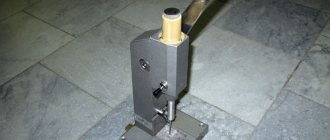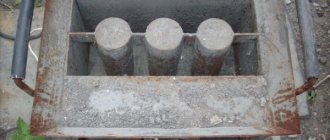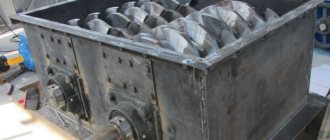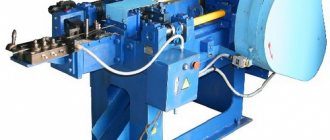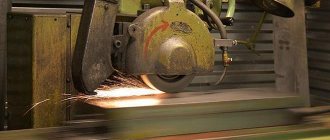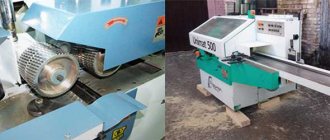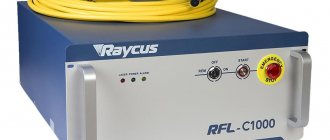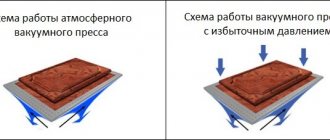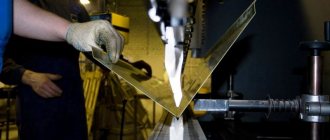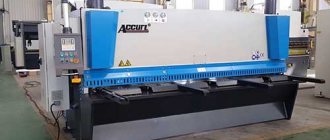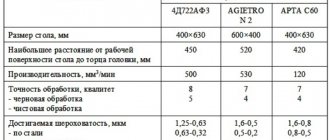A useful accessory is a welding rotator. Round blanks are installed on it and fixed tightly. You can weld fittings and flanges continuously, just adjust the speed of rotation of the mechanism around its axis to suit the welding mode. It is different for each welder and depends on experience.
Rotary equipment makes the welder’s work easier and eliminates unnecessary manipulations. Cylindrical workpieces do not need to be constantly rearranged; doing this with one hand can be difficult.
Devices are constantly being improved:
- automate;
- equipped with control units.
Rotary devices are not just rotating stands, but convenient manipulators used in large industrial enterprises and small workshops. Surfacing circular welds are neat and even.
Definition and purpose of rotators
The equipment was developed for welding circumferential seams of coaxial structures, cyclones, gas ducts, and pipelines of complex configurations. The welding rotator consists of three main components:
- supporting structure in the form of a platform or support posts;
- parts fastening unit;
- a rotating mechanism that provides the required rotation speed of welded workpieces.
The carrying capacity of the mechanisms reaches several tons. The rotation speed depends on the power of the electric drive. Torque of up to 200 Newtons is transmitted to the axle.
The auxiliary device ensures a rational arrangement of the workpieces to be welded. The mechanism operates in manual and automatic mode. Installed on a massive or rigidly fixed platform. The design stabilizes the position of the pipe blanks; when fixed, the gap is adjustable. The distance between the distances depends on the coefficient of linear expansion of the alloy.
When choosing a device, it is important to consider the spatial position of the workpieces. Rotary devices are designed to work in a horizontal or vertical position. There are universal models on which the axis is installed at any desired angle; they are needed to create segment elements of complex geometry.
Scope of application
This equipment can be used for automatic, semi-automatic and manual electric arc welding. Rotators are also often used for so-called surfacing work.
Another advantage of this device is that the rotation speed of the fixed metal product can be adjusted individually by the master welder. It must exactly match the speed of formation of a particular seam.
Those who are in the process of choosing a rotator should definitely pay attention not only to the type of device, but also to its weight, power, load capacity, maximum and minimum rotation speed, etc. Exact technical specifications and properties may vary. Each specific model has its own.
Classification of welding rotators
The type and design of the auxiliary mechanism are selected according to the type of elements being welded. The rotator for welding is classified:
- by the method of rotation and the system of supporting parts;
- number and quantity of rotation axes;
- tilt angle;
- drive system (electric, manual or foot);
- by method of application (universal, specialized);
- functionality.
Horizontal
Designed to form circular internal and external seams. The horizontal welding rotator has a stop function after a full circular cycle. The permissible length of the workpiece is 2.5 m, the maximum weight of welded products is 6.3 tons. The parts are installed perpendicular to the support platform, rotate around their axis, the position of the welding equipment is stationary.
Vertical
Provide rotation of workpieces in a vertical plane. Applicable:
- for argon automatic and semi-automatic welding;
- application of flux;
- metal surfacing.
The linear length of the processed parts is up to 2 m, the maximum weight is 2 tons.
Roller
A special feature of welding roller rotators is that the part is held by its own weight. It is placed on several pairs of rollers, which ensure rotation at the required speed. Designed for welding small and large parts, the permissible length is 4 m. The equipment can withstand up to 20 tons. Manufacturers produce roller rotator-pushers in a large assortment.
Universal
The name is justified. Universal welding rotators are capable of holding welded elements in any plane. Designed for stationary welding of complex main pipeline sections. The permissible length of welded fragments is 1.9 m, the total weight of the structure is up to 2 tons.
Main types
There are four main types of rotators for welding:
- roller;
- horizontal;
- vertical;
- universal.
Roller rotators are used for welding work with metal products that have a cylindrical shape. Such parts are easily fixed in the device and move thanks to the rollers located at the bottom. The most powerful models of roller-type rotators are capable of withstanding loads of up to 20 tons; metal workpieces up to four meters long can be inserted into them.
What are welding manipulators
The design of welding rotators and manipulators is identical. They differ in functionality and electronic equipment. Setting up the program takes a few minutes, fixing and unlocking are automatic.
Welding manipulators are much more practical than their rotary counterparts. Advantages:
- fast changeover, the trajectory of parts can be easily changed;
- strength of connections;
- versatility, one type of equipment can be configured to work with parts of various sizes.
The modular design is used for automatic and semi-automatic welding.
Structural components of the current source
The basis of resistance welding with your own hands is an electrical circuit using capacitors. The welding current pulse is generated by the discharge of a capacitor.
A current pulse is created in the secondary winding of the transformer. Capacitors C8-C9 are connected to the primary winding of the transformer. It is thanks to them that the discharge necessary to receive an impulse is formed. The capacitor discharge is controlled in thyristors T1 and T2. The capacitor is charged along the chain from the input transformer “Current”. The circuit also shows current rectification by diodes D6-D7.
The operation of such a capacitor source is carried out according to the following principle. When the main circuit is turned off, capacitors C8-C9 are charged from the “Current” transformer circuit. At the moment when the system starts, they are discharged onto the secondary winding of the output transformer Tr3. The Ru1-Ru2 circuits R34 and C10 are responsible for controlling the pulse duration. After the circuit is turned off, the process repeats.
Types of manipulators
Models are distinguished by the possibilities of moving the workpieces being welded, the dimensions of the finished units, and weight. Welding manipulators come in several types:
- console;
- carousel;
- lever-sector;
- single-support;
- with two supports (designed to hold long elements);
- universal with partial or complete balancing relative to the tilt axis;
- manipulators-positioners providing marching speed in any position;
- specialized, designed for welding elements of complex configuration.
Equipment is purchased for:
- small-scale production;
- single production of metal products;
- frequent changes in the type of parts being welded.
With continuous production and a large volume of welded products, the purchase of expensive equipment is economically justified. Models are equipped with tracking sensors. They control the size of the gap and the quality of the connection. The dual control system is the key to a reliable weld.
The percentage of defects when using auxiliary rotary equipment is insignificant. The arc is stably maintained, an even bead is formed, and the seam is obtained without sagging or burns. Automated auxiliary devices are needed for connections, the strength and tightness of which determine the safety of operation of the finished welds. When the slightest deviation of the welding point negatively affects the rigidity of the seams.
Why should you do it yourself?
A self-made roller welding rotator saves a certain amount of money from the family budget, and can work in the same way as a store-bought one. By developing the design yourself, you can create a model suitable for specific types of welding work, which will stand stably when rotated and allow the seam to be drawn smoothly.
Using this device allows you to:
- perform welding on pipes of different diameters;
- weld flanges to the ends of the pipes;
- produce barrels and tanks of different sizes;
- automatic rotation of the product allows you to speed up the welding process, consisting of the same type of circular seams;
- improve working conditions for the welder;
- improve the quality of welding by maintaining a constant speed throughout the entire weld, which eliminates sagging and lack of penetration;
- When attaching the burner to a bracket above the pipe connection, the process is fully automated.
Making an inverter for experienced craftsmen
Assembling a homemade device of this type is quite complicated. To do this, you need to have experience in repairing electronic devices. However, it is not necessary to purchase expensive parts and components for this. The power supply is removed from a non-working computer or TV.
Device diagram
When assembling for the first time, it is recommended to use a simple ready-made circuit that includes the following elements:
- Power supply unit for the converter and control system. Made from an optocoupler used to supply current to computer components.
- Charge accumulation unit for pilot arc. It is made on the basis of KT972 transistors, which are placed on radiators. To connect these components, automotive relays rated at 40 A are used. For control, circuit breakers rated at 25 A are used. The open circuit voltage is 300 V; when welding, this parameter is reduced to 50.
- Current converter. The most important parts of this block are the inductors. Their parameters are adjusted using resistors. If the values are inconsistent, the current is insufficient.
- PWM from US3845 PCB. The part is equipped with KT972 brand transistors.
The circuit under consideration converts the AC voltage supplied from the network into DC. This helps produce current with the characteristics required to form a strong weld joint.
Required Items
To assemble the unit you will need:
- computer power supply;
- copper wires;
- US3845 microcircuit (purchased ready-made);
- housing from an old microwave oven or system unit;
- transistors.
Manufacturing process
Assembly begins with remaking the power transformer with a ferrite base. The rectifier bridge is equipped with ready-made components from high-speed semiconductors. After modifying the transformer, following the diagram, connect the following elements:
- diode rectifier with power reserve, ballast regulator, slow start;
- control unit based on 2 transistors and a driver;
- transformer power section;
- output component from inductor and diodes;
- cooling system from a computer cooler;
- system for monitoring output current parameters.
All components are installed on a 1.5 mm thick textolite board. The structure is inserted into a metal casing. It is not advisable to use a plastic case.
Source
Rotators for welding circumferential seams
The quality of the seam depends on the experience of the welder and correctly selected equipment. But when making circular seams, if it is possible to rotate the joint, defects in the joint may occur due to jerks during rotation. To avoid this, use a welding rotator. It is especially useful when you need to make many of the same type of circumferential seams.
Such a device is sold along with welding equipment in stores, but you can also make it yourself. To do this you will need drawings, work item blanks, and an engine. Before development, it is better to familiarize yourself with a video about the principles of operation of welding rotators and their varieties in order to better understand what the final result is needed.
Why should you do it yourself?
A self-made roller welding rotator saves a certain amount of money from the family budget, and can work in the same way as a store-bought one. By developing the design yourself, you can create a model suitable for specific types of welding work, which will stand stably when rotated and allow the seam to be drawn smoothly.
Using this device allows you to:
- perform welding on pipes of different diameters;
- weld flanges to the ends of the pipes;
- produce barrels and tanks of different sizes;
- automatic rotation of the product allows you to speed up the welding process, consisting of the same type of circular seams;
- improve working conditions for the welder;
- improve the quality of welding by maintaining a constant speed throughout the entire weld, which eliminates sagging and lack of penetration;
- When attaching the burner to a bracket above the pipe connection, the process is fully automated.
Varieties and drawings
In the video you can see various models of rotators created by yourself. Welding with their help is much easier, thanks to the increased concentration of the welder’s attention on the burning of the arc and the formation of the seam, without distractions from manual rotation of the structure.
You can make your first welding rotator in several ways. The scheme will depend on the subsequent application and the types of sutures applied. Therefore, before purchasing parts and elements, it is worth considering various photos of similar devices in order to decide on the type of structure.
Roller versions
For welding circumferential seams on pipes with a diameter from 25 to 1000 mm, roller welding rotators are actively used. The video explains their operating principle.
The product is placed on four rollers, where one or two are driving (the drive is connected to them), and the rest are supporting.
The rollers are attached to a common base, slots in which allow you to change the distance between the rotating supports.
The motor drives the drive roller. The rotation speed is changed by a gearbox, which reduces the speed by an order of magnitude, and a thyristor regulator, which slows down the speed to welding speed. Additionally, the torch from the semi-automatic machine can be attached above the joint of the pipes, and the welding start button can be displayed separately. Then the whole process can be automated and performed while standing to the side.
Drum and rotating base models
In other videos you can see rotators, where the basis is a cam spindle (pressure drum) from a lathe. This device has a base on which a shaft with a drum at the end is attached.
The pipe is installed in the cams. The mating part is attached to it. Rotation occurs as in the previous version.
The disadvantage is the limitation in the diameter of the pipes used (this depends on the width of the cams).
Another model of a welding rotator is a design where it is not the product itself that rotates, but the base underneath it. It is clear from the video that this option is well suited for circular welds for flange welding.
By turning the product over, you can weld both inside and outside.
Therefore, when deciding on the model of the rotator, it is worth considering what types of seams will have to be made more often (circular at the junction of two pipes or circular for attaching a flange), and then start creating.
Making a rotator
To create a homemade rotator with a roller part you will need:
- electric motor;
- metal base plate;
- gearbox;
- thyristor regulator;
- rollers;
- controls.
The motor can have different parameters, the main thing is that it operates from 220 V AC. The power of 1200 W or 3000 W does not matter, since its speed will still be too high for welding. But the higher the power value, the more electricity this device will consume, which is unprofitable during long-term work.
To reduce the rotation speed, a gearbox is installed in the circuit. You can immediately select a model that accepts engine speed, and due to gears of different diameters, produces a rotation speed acceptable for welding.
If this is not possible, then you should use an additional gearbox. In cases of working with pipes of the same diameter, this will be sufficient.
But if the size of the products is not constant, then it is worth making the change in rotation smooth using a thyristor controller.
A sheet of metal 5-10 mm thick is suitable as a base. U-shaped “ears” should be made for the rollers, attached to the base with a bolt. It is worth making slots in the plate to allow you to change the distance between the rollers. This will allow you to work with pipes of different diameters. Torque is transmitted to the axis of one of the rollers, which sets the structure on it in motion.
For control, you can display a button on the wire, which the welder will hold in his hand and press while starting welding. An alternative option is to install a pedal on the floor, stepping on which will start the mechanism.
Using a welding rotator increases productivity and improves the welder's working conditions. This also has a positive effect on the quality of the connection. And making such a device yourself also saves money.
Share with your friends
Rotators for welding
» Welding rotators
Rotator for welding–
designed for placing the welded products in a position and rotation convenient for welding. One of the most important advantages of welding rotators is that they make it possible to move the workpiece at a certain speed when automatic welding of circumferential seams is carried out.
Toroidal apparatus
It is much lighter than usual. It is convenient to carry. Such devices are used where the ability to quickly transport is important.
Whatever device you choose, in any case, make it yourself:
- Interesting;
- Practical;
- Economical.
And, of course, it’s always nice to show a homemade welding machine to your friends. It will become a source of pride and an indispensable assistant in the household.
Repairing a welding machine with your own hands is also quite exciting.
